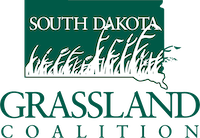Brett stressed that thinking holistically has helped him trim expenses and manage the ranch in a more ecologically friendly manner. Thus, the Nix’s are less reliant on chemicals, iron, and fossil fuels than they were in the past. How much more “green” can you get?
Diversity in Ranch Management
Jim Faulstich has several enterprises and likes the flexibility to “get in and out of quickly”. Jim, in addition to running a cow-calf operation, has four other enterprises: custom grazed yearlings, pheasant hunting, archery deer hunting, and crop and hay production. The custom-grazed yearlings give Jim drought management flexibility in addition to useful harvesting of invading grasses like smooth bromegrass, Kentucky bluegrass, and crested wheatgrass. If drought strikes, Jim can give his grazer two weeks’ notice to come to load them up.

